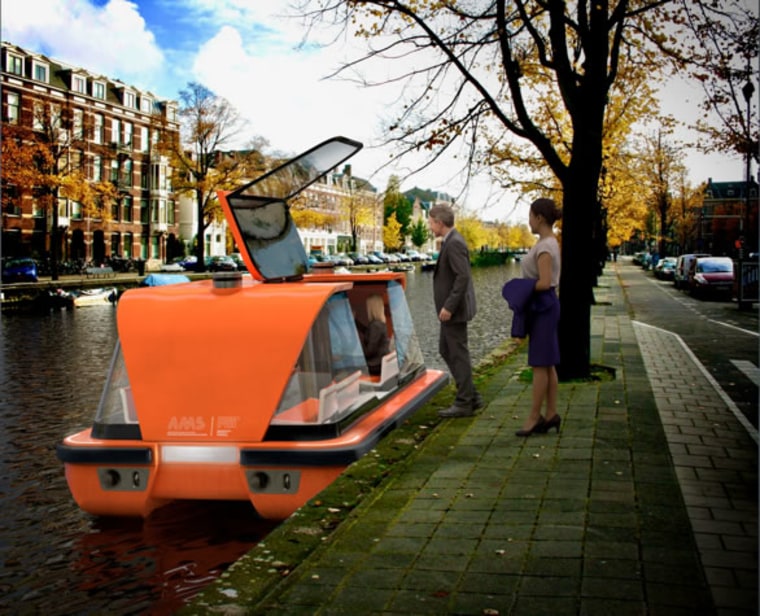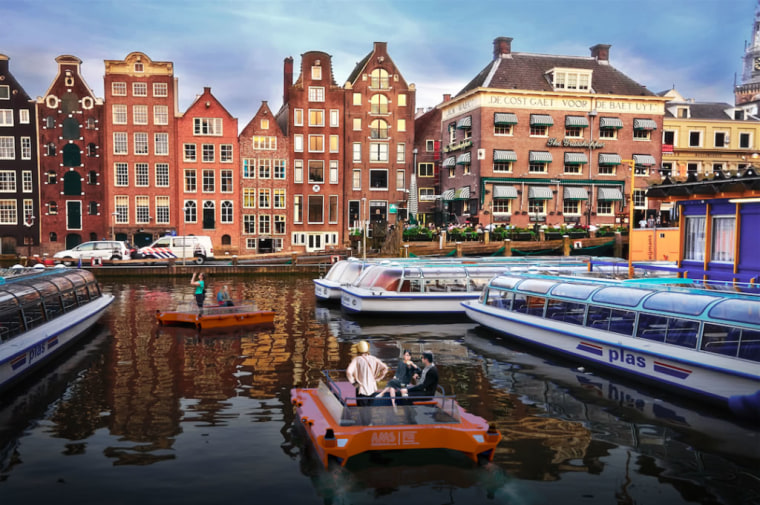Boats are going robotic. Using the same technologies seen in self-driving cars and aerial drones, researchers are developing driverless vessels to be used as water taxis and to ferry cargo and garbage within cities — while easing traffic congestion on nearby roadways.
The robotic boats, or “roboats,” would be programmed to ply rivers and canals in urban areas, finding their way amid conventional boat traffic. Swarms of roboats could even be programmed to self-assemble into bridges, floating markets and concert venues and the like — and then to quickly separate when the need has passed.
“We would like to adapt the same benefits that we potentially see in autonomous vehicles for waterways and for cities that are built on waterways,” says Daniela Rus, director of the computer science and artificial intelligence laboratory at MIT and one of the researchers on the project. “We believe that with fleets of very agile autonomous boats we can offload some street traffic onto the waterways.”
Rus and her MIT colleagues have been working with the AMS Institute, a research group in Amsterdam, and have already tested robotic boat prototypes on canals there. The researchers are now in the second year of a five-year project to develop roboats for use in Amsterdam, Venice, Bangkok and other cities that are well supplied with local waterways.

The researchers also believe the self-driving boats could be used in major cities like New York and Boston and to transport cargo on major rivers like the Mississippi — perhaps even on international shipping routes.
The project has received funding from the city of Amsterdam; WaterNet, a Dutch water utility; and the city of Boston.
Do roboats really make sense? Norman Garrick, a civil engineer at the University of Connecticut who specializes in sustainable city transport, says cities might find it hard to switch waste management or cargo deliveries from roads to waterways even where suitable waterways exist. “I think it does have some promise,” says Garrick, who is not involved in the project. “But like a lot of these things, it will depend a lot on the context and the execution.”
But Javier Alonso-Mora, a Delft University of Technology roboticist who is planning to join the project, sees big advantages for driverless vessels, at least in waterway-intensive cities. “Having swarms of robots in the canals of Amsterdam is a great idea,” he said in a written statement. “Twenty percent of the surface in the Netherlands is water, and robots can be an efficient mode of transportation and logistics.”
Eight quarter-scale prototype roboats have been built, each with a 3D-printed rectangular hull roughly six feet long and two-and-a-half feet wide. The boats are propelled by four electric thrusters and equipped with a power supply, GPS gear and a wifi antenna. Onboard ultrasound beacons and docking systems are designed to enable the vessels line up precisely and lock together as needed.
Carlo Ratti, the MIT professor who leads the project, says its next phase starts in October, when the quarter-scale roboats will be launched on the canals of central Amsterdam.

